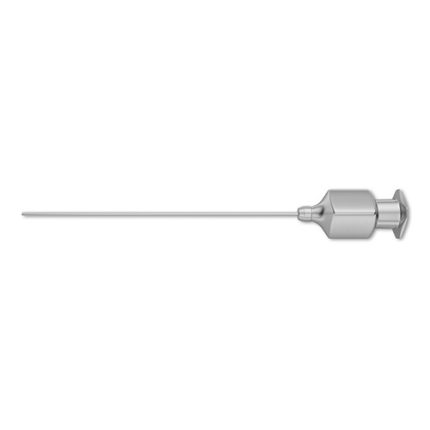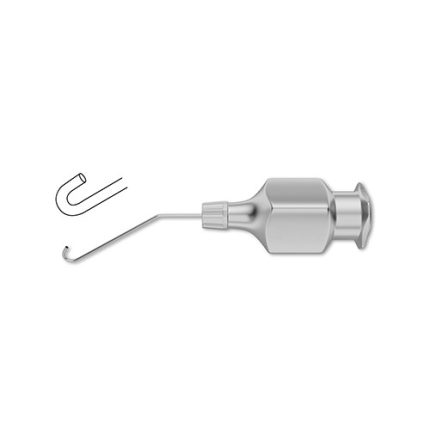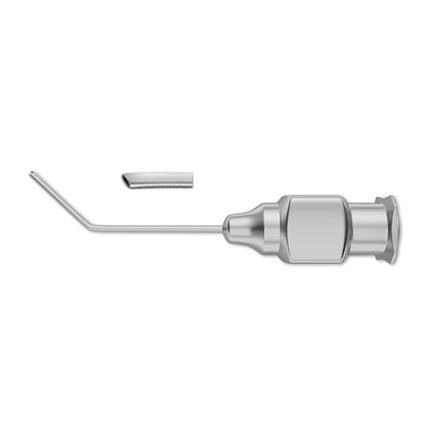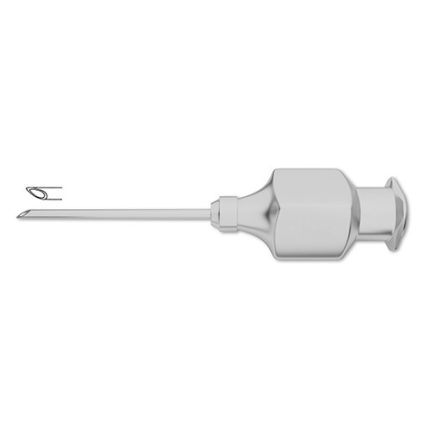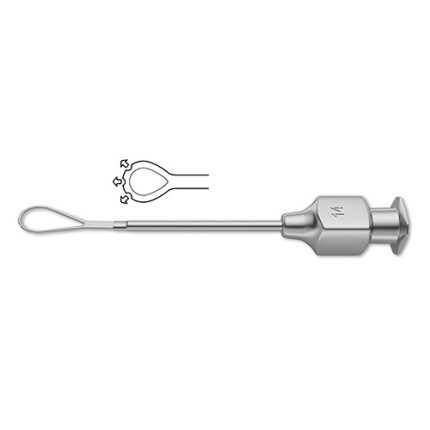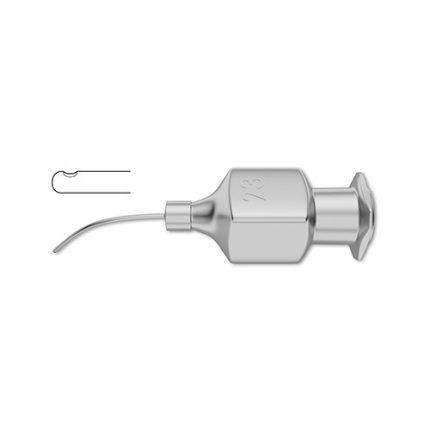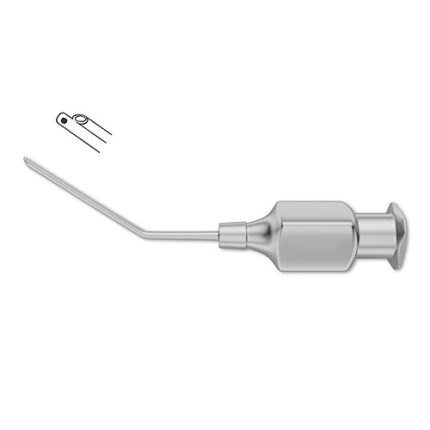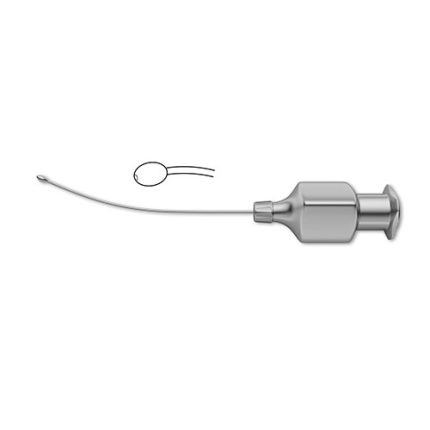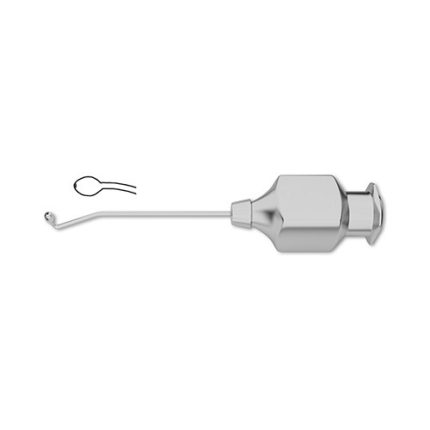McIntyre Lacrimal Probe Cannula
2" (5.0 cm), 23-gauge McIntyre Lacrimal Probe Cannula is an extremely useful tool in treating tear duct obstructions. The probe may be used to investigate blockage of lacrimal gland damage or more frequently, obstruction of the nasolacrimal duct. The slender profile of the cannula allows access to the small entrances of the duct. Both straight and curved models are available depending on surgical preference.
McIntyre-Binkhorst Irrigating Cannula
smooth blunt tip, front opening, 26-gauge McIntyre-Binkhorst Irrigating Cannula is a useful tool in cataract procedures. The curved tip of the cannula is used for loosing the peripheral cortex of the lens during difficult extraction. The cannula features a smaller gauge for easier access and a shorter working length for more control. Both right and left curvatures of the cannula are also available depending on surgical preference.
Nucleus Hydrodissection Cannula
25 gauge, 7.0 mm angled shaft w/ flattened tip, overall length 21.0 mm (excluding hub)Nucleus Hydrodissection Cannula is a useful tool in cataract extraction procedures. The cannula can be used to manipulate and rotate the lens during a hydrodissection for easier extraction. The small gauge with flattened tip assures minimal trauma to the surrounding tissue.
Randolph Cyclodialysis Cannula
front air injection port, 12.0 mm angled tip, 19-gauge Randolph Cyclodialysis Cannula is a commonly used tool in glaucoma procedures. The cannula is frequently used to irrigate the anterior chamber once a communication has been established between the anterior chamber and the suprachoroidial space. The cannula has a front injection air port and features a flat tip or thin spatula blade depending on surgical preference.
Scheie Anterior Chamber Cannula
blunt, 27-gauge, 3/4" (2.0 cm)Scheie Anterior Chamber Cannula is a frequently used tool in cataract extraction procedures. The small gauge cannula is nimble enough to fit into a small limbal incision accessing the anterior chamber. It may be used to aspirate fluid within the anterior chamber exposing the lens capsule.
Scheie Aspirating Cataract Needle
Sheets Irrigating Vectus
ports at 3, 9, & 12 o'clock w/ serrations on top of 6.0 mm x 10.0 mm loop, 21-gauge Sheets Irrigating Vectus is a useful tool for cataract and lens extraction procedures. The loop is instated between the nucleus and the posterior capsule; fluid is allowed to pass into this space to allow for easier removal of the lens. Three irrigation ports provide ample fluid distribution, while serrations on the loop allow for sure grip of lens tissue.
Simcoe Cortex Extractor
23-gauge Simcoe Cortex Extractor is a useful tool in cataract procedures. Following emulsification, if part of the lens cortex remains, the extractor is used to remove the tissue especially at the difficult 12'oclock position. Two different working lengths are available depending on surgical preference.
Simcoe Reverse Double-Barreled Irrigating/Aspirating Unit
irrigation through main w/ aspiration through side taper, 23.0 mm port Simcoe Reverse Double-Barreled Irrigating/Aspirating Unit is a prescribed tool for used in phacoemulsification procedures. The aspirator may be used to clean out the capsular contents for epinuclear debris following removal of the nucleus. The side-tapered design allows for quick and efficient cleaning of the capsular bag.
Troutman Alpha-Chymotrypsin Cannula
Welsh Flat Olive Tip Cannula
25-gauge Welsh Flat Olive Tip Cannula is a useful tool in cataract procedures. The olive tip of the cannula is designed to create a space for aspiration between the anterior capsule and the surrounding tissue. The shaft of the cannula is available curved right, left, or straight depending on surgical preference.

